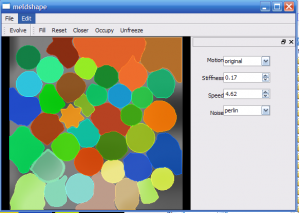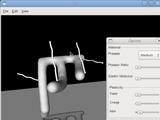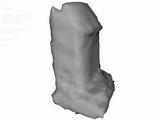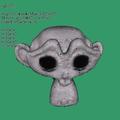Posts Tagged shape
MeldShape
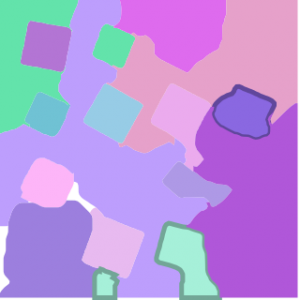
MeldShape is another application for generating random shapes. Although, unlike JShape, which produces shapes in an algorithmic way, MeldShape takes an initial set of shapes and evolves them using differential equations.
Each shape has a measure of speed over the domain, and tries to fill in the entire domain without conflicting with other shapes. There is also a measure of how much a shape can vary from its original shape. The evolution is performed using an implicit level-set implementation. More technical details: meldshape
Below there are binaries for both windows and Mac. The Mac version will require you to download a recent version of the open source Qt libraries. Open up the application, and drag a set of seed shapes from JShape onto the window. Use the evolve button to start the evolution.
The concept for this project was initiated for Mat Bushell.
Some movies of evolution:
And an unedited (poor quality) movie of how to use MeldShape in combination with JShape: meldshape-usage
JShape
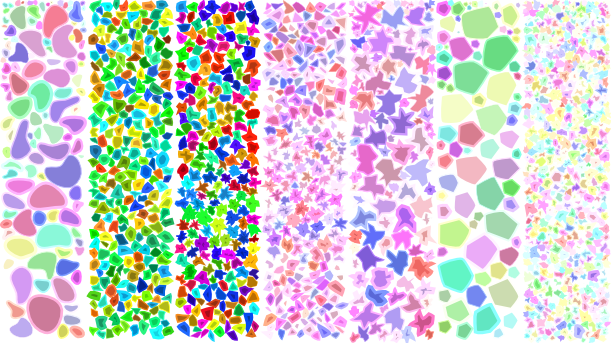

M.Sc. Thesis
Posted by in Projects on November 30th, -0001
In my M.Sc. Project I studied methods for recovering the shape and reflectance of objects from image sets in indoor environments
Masters Thesis
My masters thesis work is focused on the capture of 3D models and reflectance properties from images. One of the main goals of this work was to produce a 3D geometry and texture map that was easy to use in typical graphics applications. We emphasize that obtaining a true geometry overcomes some of the limitations of Image Based representations, in that the models can be rendered under novel lighting, and novel viewpoints. Since a mesh representation is common in graphics applications, our models can easily be merged with other models and modified (ie. animated) by artists.
A pdf of the document is available.
Below are some results and applications of this work.
Results
Animated GIF of the initial visual hull and the refined results of the saddog sequence.
Two of the input images (top), followed by the ground truth (2nd row), the visual hull reconstruction (3nd row), and the reconstructed results (bottom).
Two of the input images (top), followed by the initial model (2nd row), a shaded model of the refined results (3rd row), and a texture mapped model (bottom).
The first column is an imput image, followed by a shaded rendering of the recovered model, a rendering of the diffuse texture lit under the same lighting, a rendering of the diffuse + specular texture, and a rendering with novel lighting and shadows.

Some recent results (Aug 18th) on my head. The untextured version shows a higher res version than the textured version. Only the Lambertian component is shown in the texture.
Some results of a failed attempt are also available: shaded and textured. In this case there were many missing images from the side view, and one side was not reconstructed very well.
Videos of the optimization are also available:
Windows users will need to have the divx codec installed to play the files. The codec is available as a free download from www.divx.com.
A number of the objects, as well as a downloadable viewer can be obtained on the Models page.
Applications
As one of the main applications is computer graphics/entertainment, the objects can easily be merged with other objects (hand-modeled or captured), and rendered under novel viewpoints and lighting. Below is an example of a rendering made in blender. There are several novel lights, a synthetic sphere, and the elephants legs and trunk have been animated.
Another application we have implemented is a Chess game. Each of the characters in the game were actually modeled using the method described in this thesis. Windows executable requires cygwin1.dll available at www.cygwin.com
